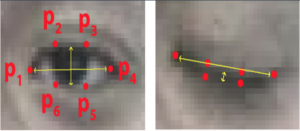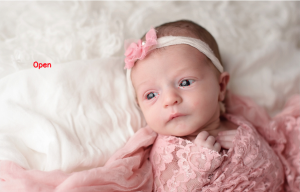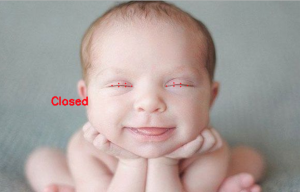Aayush
- Worked on the design review presentation and the design document
- Came across a paper on “Real-time eye blinking detection using facial landmarks” and used that idea along with OpenCV and dlib to implement eye open/close detection algorithm. The algorithm maps 68 facial landmarks onto the input image.
Eye markers for open and closed eyes look like:

The algorithm then computes distances between the features for each of the eyes and averages them out to give a number. I trained it on various baby images and it seems to work really well. (only 1 out of 100 was incorrectly classified).
Correctly detecting open eyes:

Correctly detecting closed eyes:

- I also developed a simple android application to save accelerometer data into a file on the phone so that we can use it to test sleep detection algorithm. The app currently saves acceleration along 3 x-axis, y-axis and z-axis.
Angela
- Worked on the design review presentation and the design document
- Identified important types of patterns that distinguish sleep and wake accelerometer data for the use cases that we were interested in
- Sleep with short bursts of movement around once per minute
- Regular activity, irregular acceleration
- Regular activity, sinusoidal acceleration for motion artifact
- Ran different simulations on simulated accelerometer data to measure accuracy
- Got an accuracy of 99%
- Ran simulations on simulated heart rate data with motion artifact and noise
- Got an accuracy of 98%
- BPM of 120 to 150
- Reevaluated some testing data sets
- Read papers on sensor fusion for computer vision
- Goals for next week are to see how to apply this to our problem
